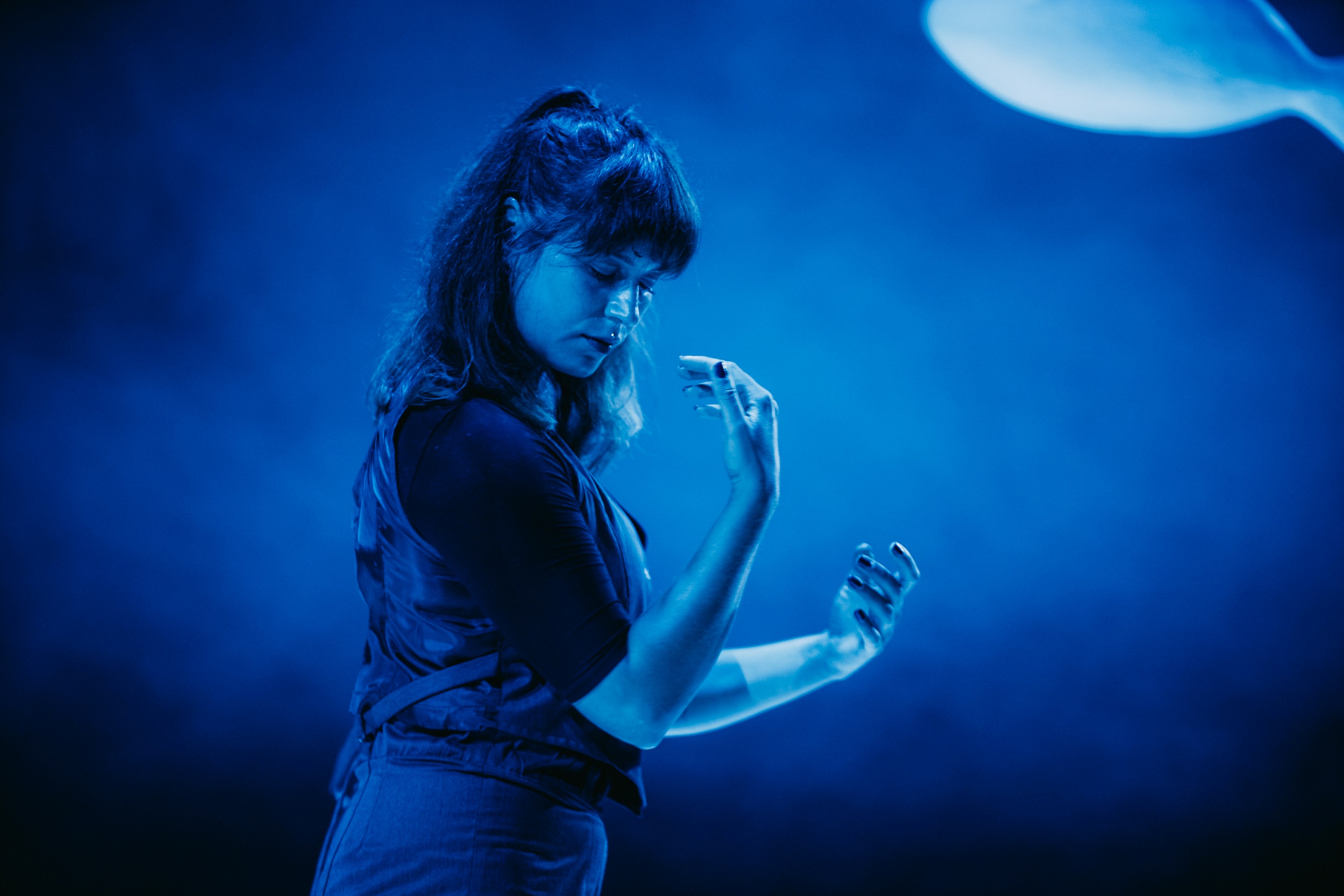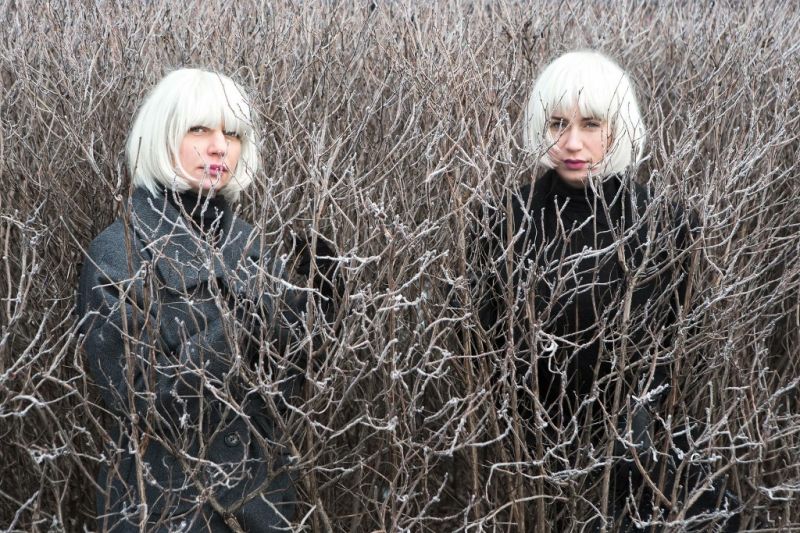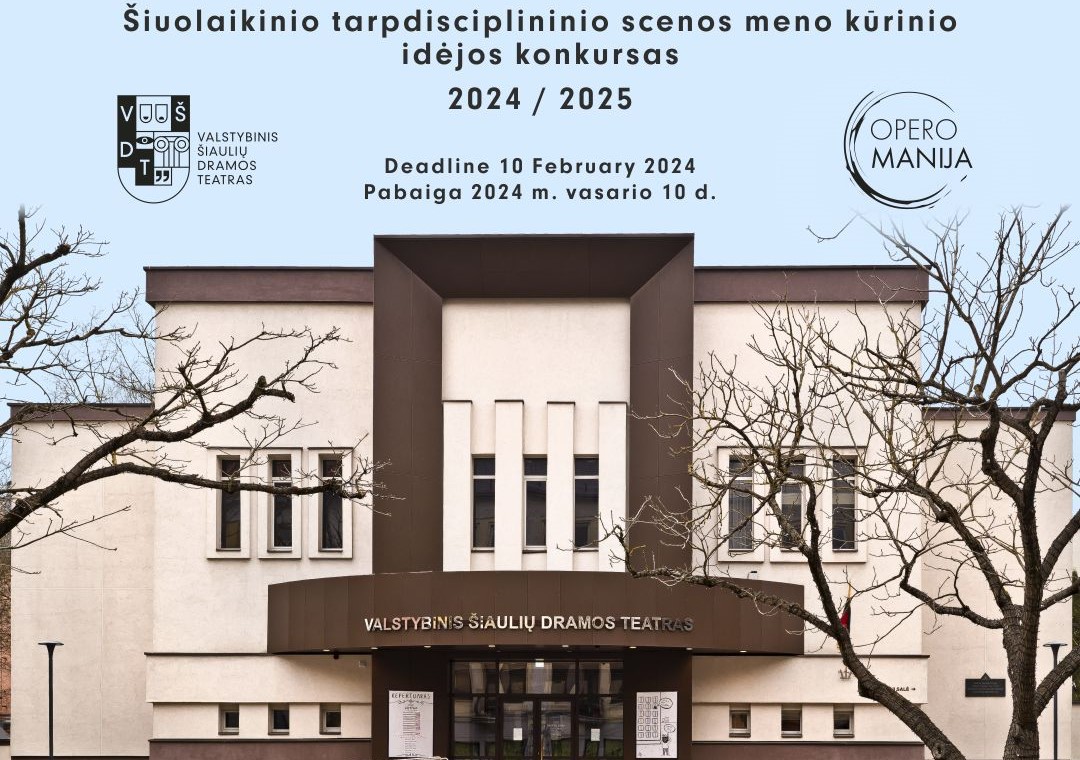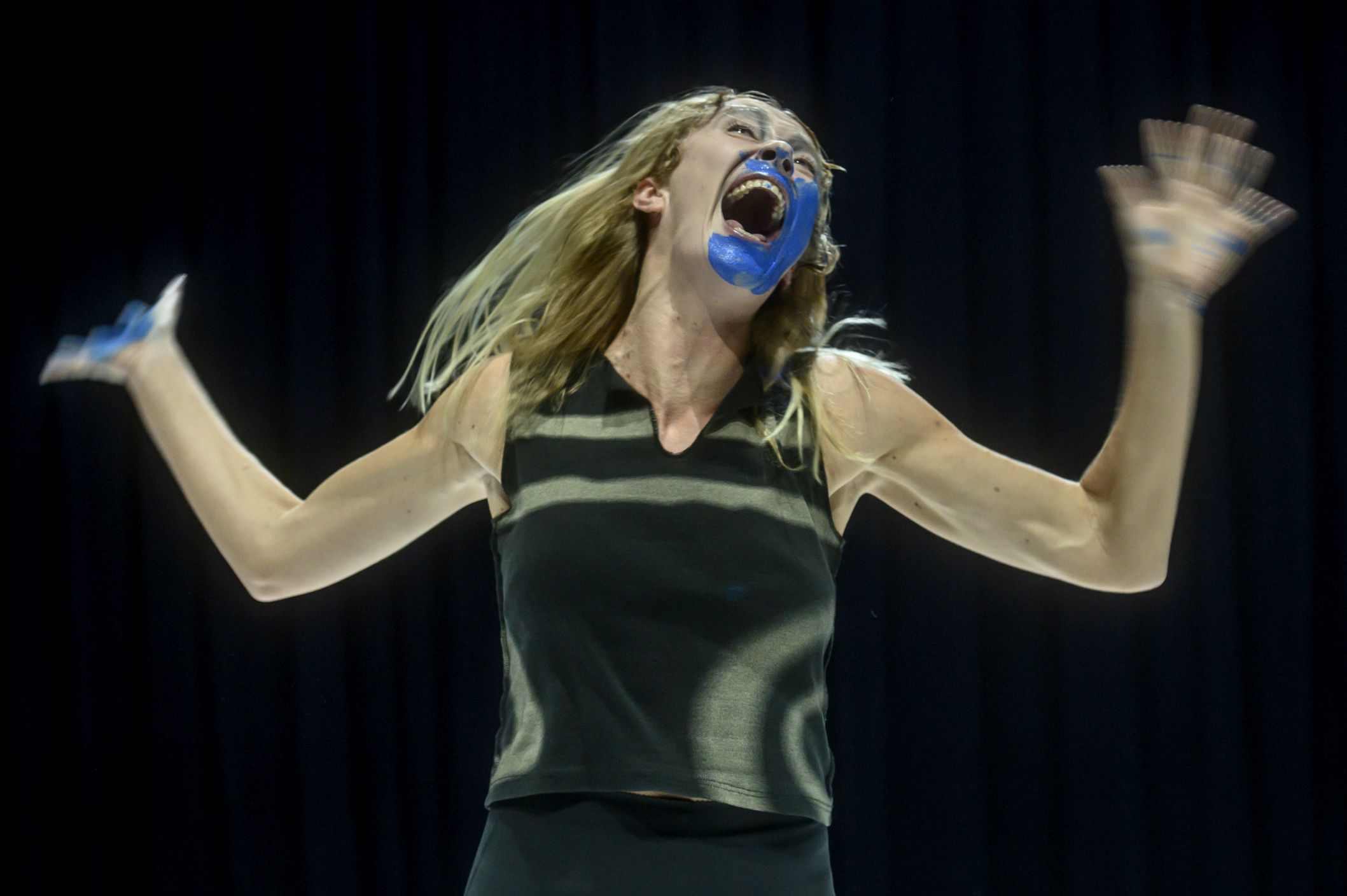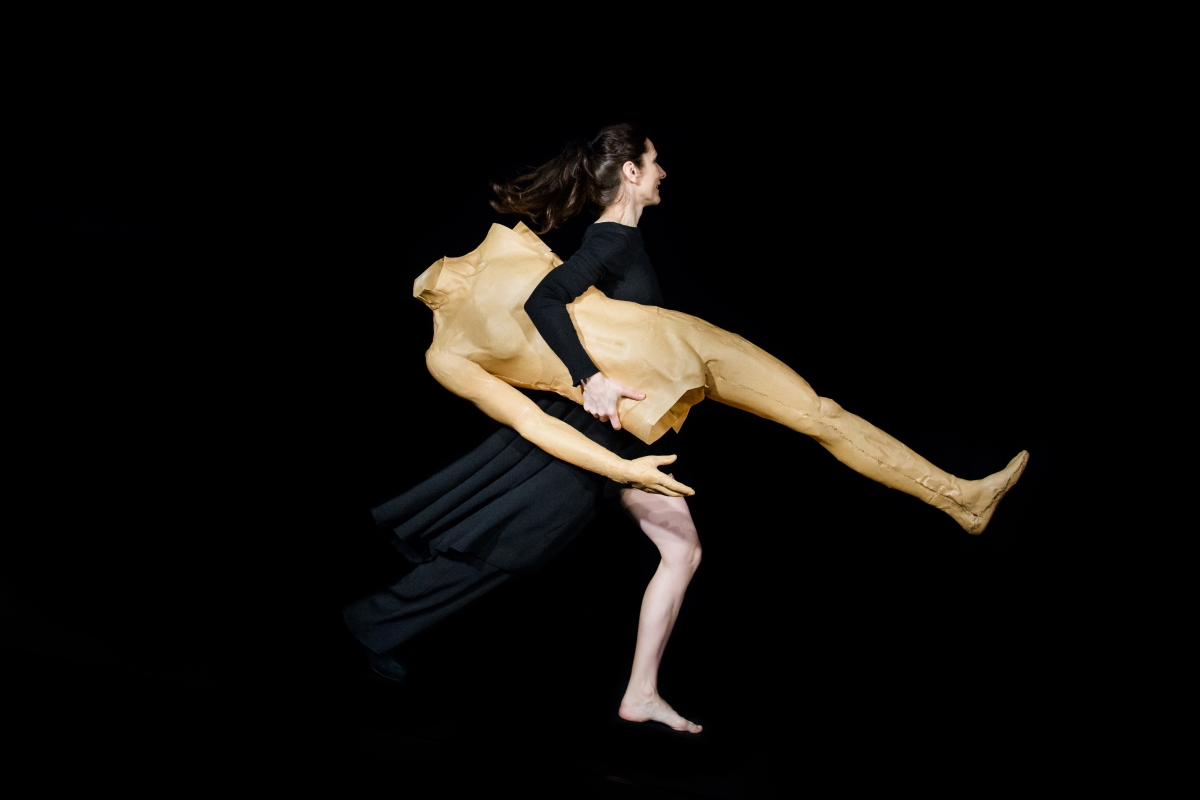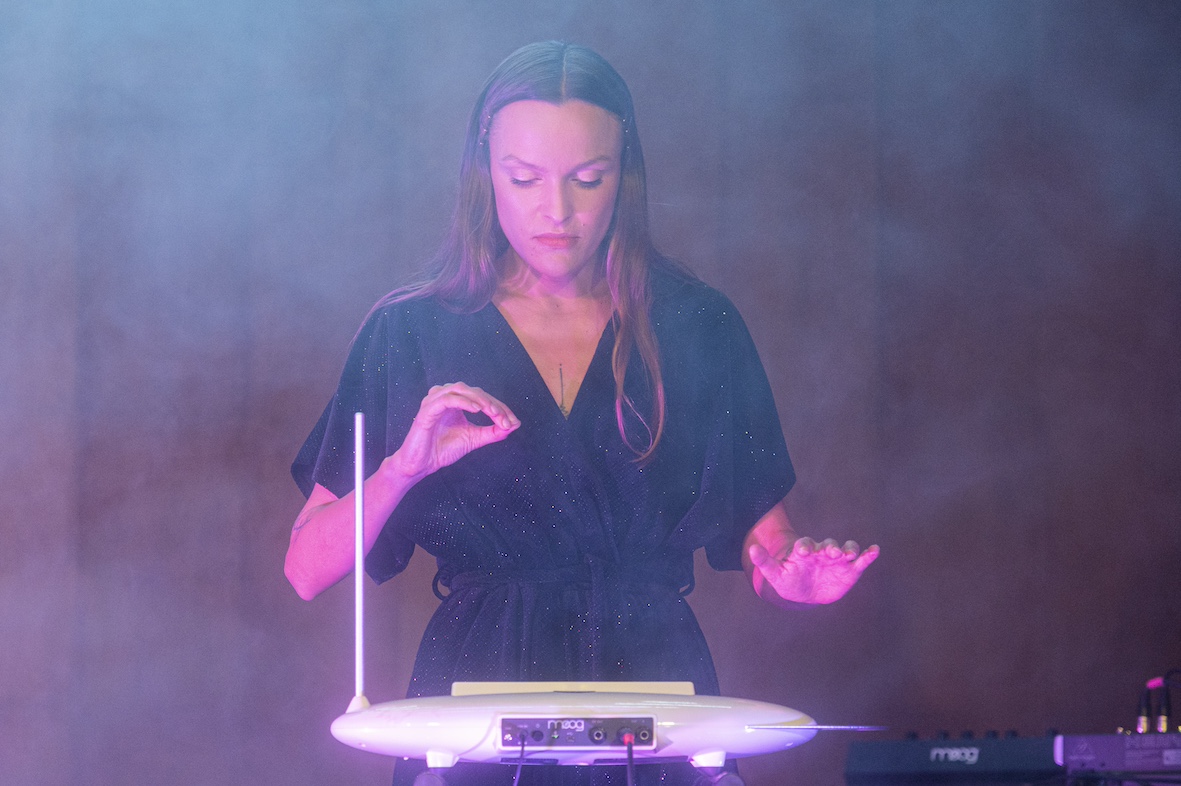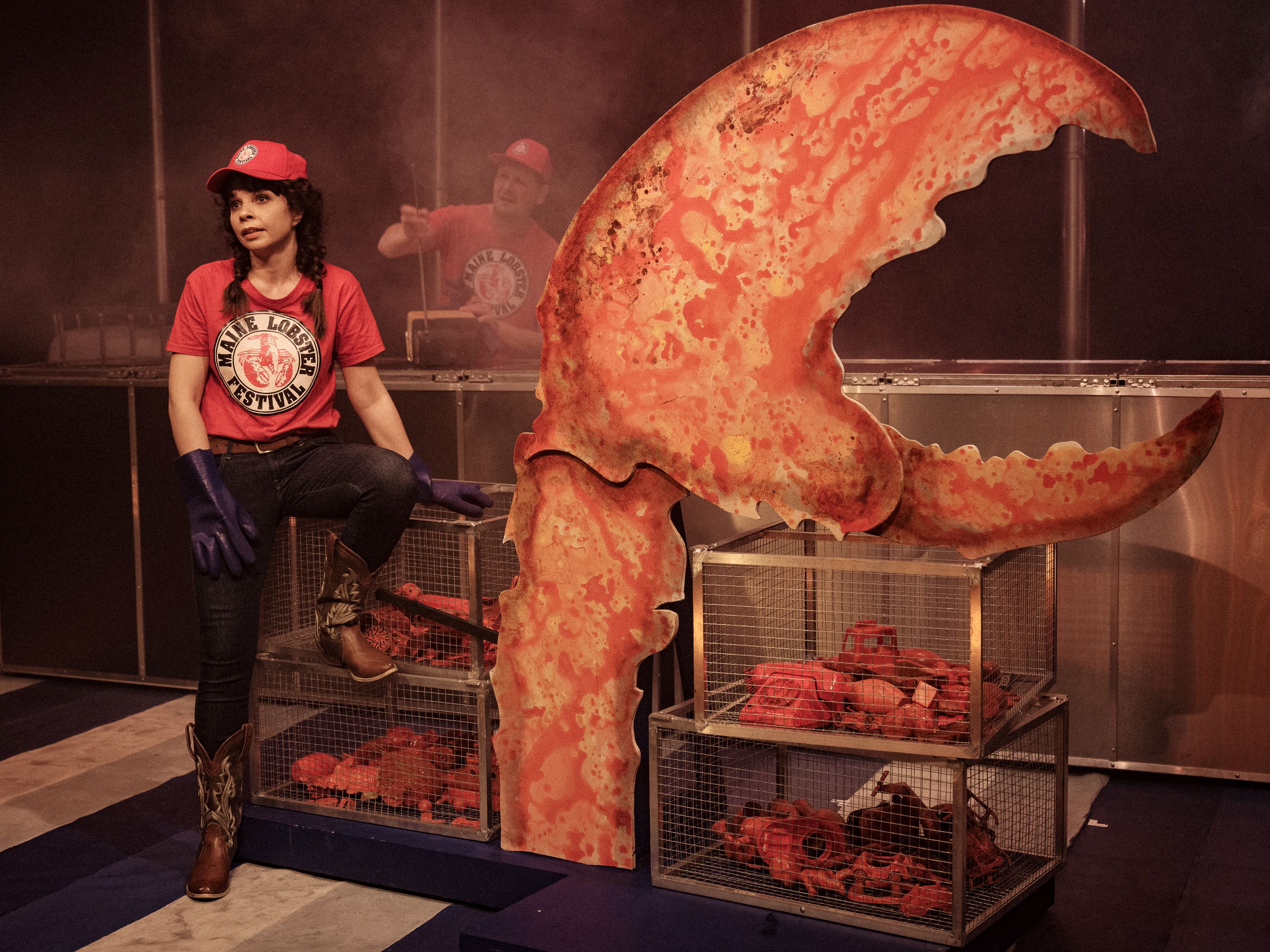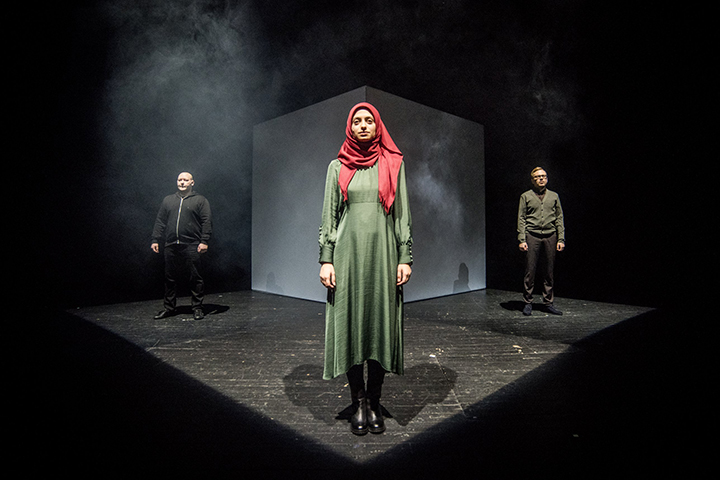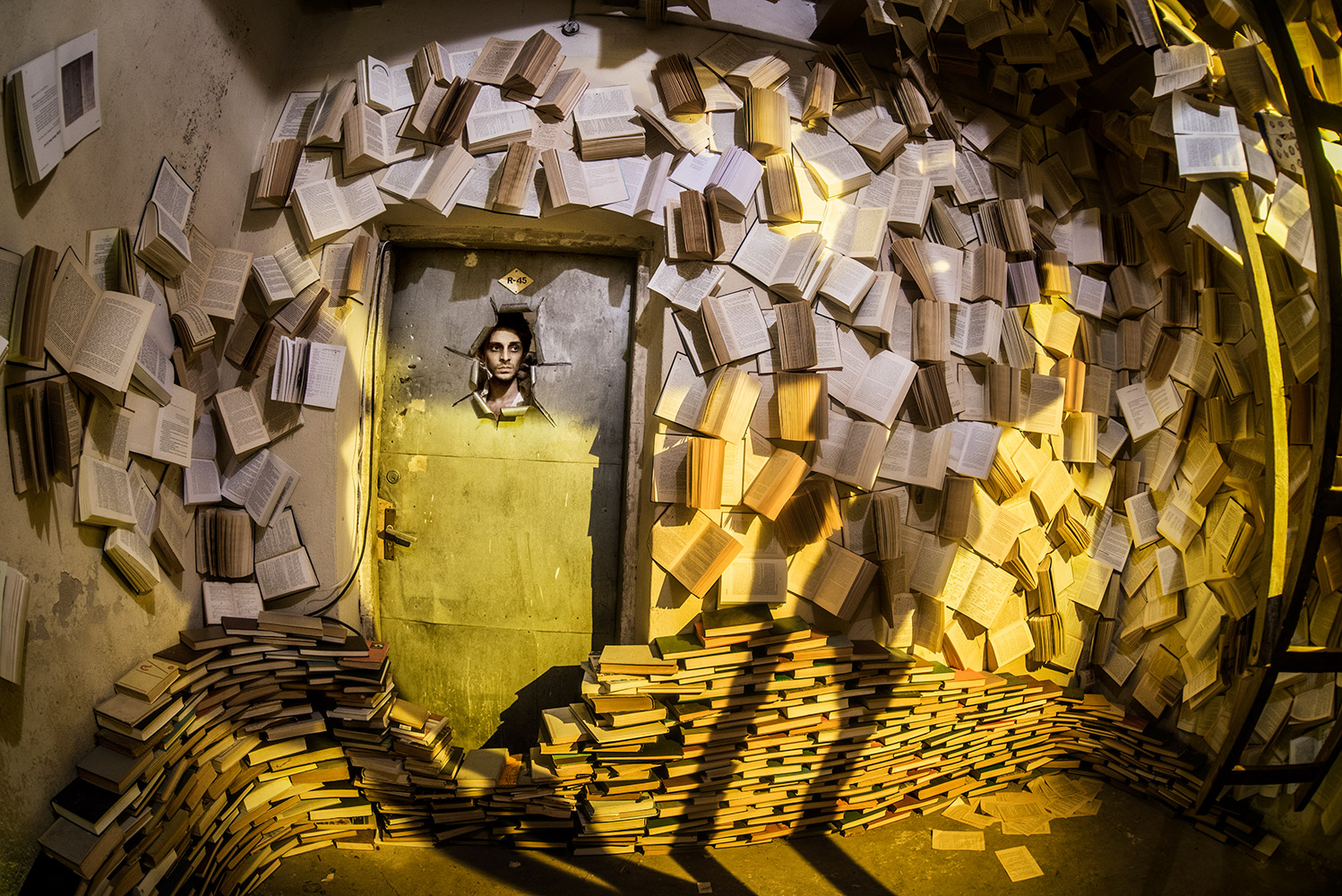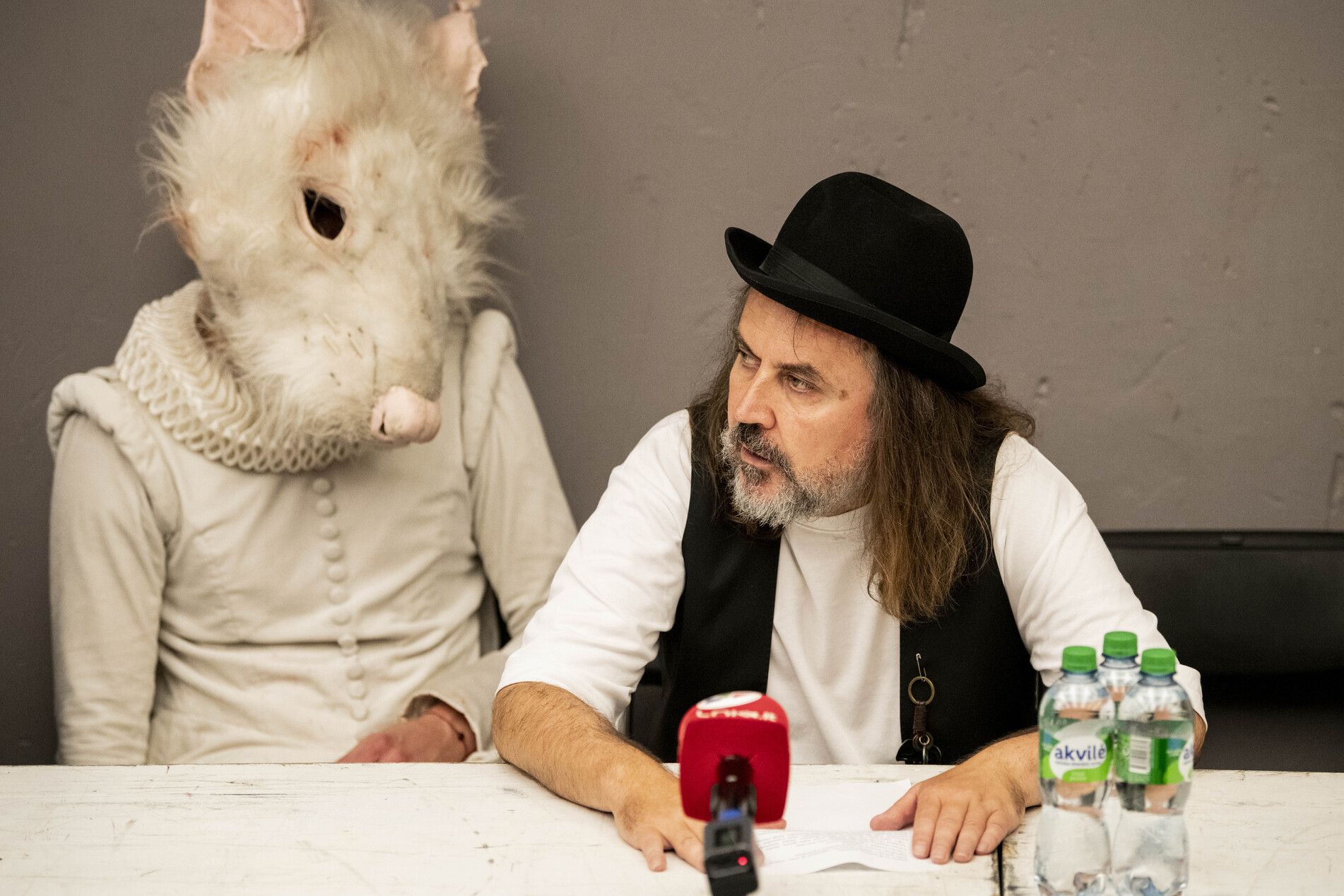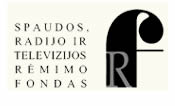When you see her on stage, something very real happens: an explosion of seemingly inexhaustible energy and genuine emotions. Greta Grinevičiūtė, a representative of the millennial generation, does not shy away from experimentation, which is why it is difficult to describe her line of work using a single word. Perhaps the key word could be “dance”, but that would significantly narrow down Greta’s pursuits. It is true that all her activities are interconnected, but at the same time they also develop separately. Greta Grinevičiūtė is a performer, dancer, theatre and film actress, choreographer, co-founder of the independent contemporary dance art organisation “Be Company”, PhD student, lecturer, dance filmmaker. If you were to ask the artist herself, she would probably say that she allows her work to flow, like the water in a river, which might take any course. This is how an avalanche of Greta’s projects and different artistic identities are born. “I am interested in bringing theatre and cinema closer to dance and vice versa. Dance is a very flexible and open art form”, says Greta. This alignment of neighbouring disciplines is at the heart of Greta’s work.
In 2013 Greta Grinevičiūtė graduated from the Lithuanian Academy of Music and Theatre (LAMT) with a Bachelor’s degree in Contemporary Dance, and in 2015 she received a Master’s degree in Choreography. The course was led by the renowned Lithuanian choreographer Aira Naginevičiūtė (one of pioneers of contemporary dance in the late Soviet era and independent Lithuania). Currently, Grinevičiūtė is pursuing her doctoral studies in theatre and film at the LAMT. In 2016, she was nominated for the “Golden Stage Cross” Award for the best dance performance of the year B&B Dialogue; in 2022, together with Agnietė Lisičkinaitė, the artist received the same nomination for the dance performance – excursion I’m Going to Buy Some Milk; in 2018, Greta was awarded by the Contemporary Dance Association for the most memorable creative activity in the dance field.
Greta’s artistic biography began with her participation as a dancer in the dance performances choreographed by her teacher Aira Naginevičiūtė: Chimera’s Necklace (2013), Towers of Melancholy (2015), and Glass Gardens (2016). The collaboration between the two artists continues to this day and Greta performs in the most recent works by Aira Naginevičiūtė: the project for bodies Hunger (2021), and the installation Pregnant Silence (2021). In 2023, Greta Grinevičiūtė created and presented a dance film about Aira Naginevičiūtė.
Greta Grinevičiūtė is an artist with a particular interest in collaborative projects. Her creative path is also marked by her work with other prominent artists who have shaped the Lithuanian contemporary dance field: choreographer, dancer, lecturer Andrius Katinas (he was also Greta’s lecturer at the LAMT, he participates in the performance Dance for the Washing Machine and Mother, and he also supervises the creative part of her doctoral project). She has performed in Vytis Jankauskas’ dance performance Agony (2017).
However, one of the most prominent projects (or rather, a whole chain of projects) has been going on since 2015 until now – the duo of fictional characters B&B, a collaboration between Greta and her long-term creative collaborator, dance artist Agnietė Lisičkinaitė. The characters of two blondes (almost twins, but different at the same time[1]) were successfully created during a residency abroad. These blondes are politically active artistic figures who like to express their opinions and feelings, reflecting on and questioning their environment. This is how the first works of the B&B duo were born – B&B Dialogue (2016), cultivating the artistic quests and search for openness, and Banana Dream (2018), a dance performance that seeks to reveal identity through disclosure of “what you are not”.
The artists’ activities have particularly intensified during the pandemic: in 2020 B&B founded the independent dance art organisation “Be Company”, under the roof of which other collaborations of the two artists have been created: Bathtub – a dance performance revealing feminine secrets (in collaboration with dancer Sigita Juraškaitė, 2021); dance performance-excursion-experience I’m Going to Buy Some Milk, exploring the Šeškinė district of Vilnius (2021), and I Slave. A Contemporary Love Story (2022) – a performance inviting to take a closer look at various forms of romantic relationships. According to the theatre scholar Ieva Tumanovičiūtė, the creators “deal with themes of concern to contemporary people, exploring the dreams and aspirations of society, raising questions about identity and gender”[2].
Activism is another important activity of “Be Company”: according to Greta Grinevičiūtė, raising an issue is a kind of activism in itself[3]. Activism is behind this year’s second edition of the MAS programme (the Week of Artistic Actions), aimed at talking about issues of relevance to society, responding to the general discourse of the time and expanding the accessibility of art by moving it away from the usual exhibition and stage spaces. However, perhaps the most famous artistic action of these two artists is the continuous thirty-minute Kiss between the B&B characters in front of the Seimas of the Republic of Lithuania in the summer of 2021. “We are tired of seeing society being divided into two parts – those with full rights and those with partial rights. Artistic actions are our tools to talk about important issues”[4], – Greta and Agnietė said at the time.
While the characters of B&B and the overall activity of “Be Company” could be described as primarily oriented towards the search for identity and activism, Greta Grinevičiūtė’s individual work mostly addresses intimacy and fragility: using the details of her own biography, Greta analyses human relationships, and more specifically, her own relationships with her loved ones in her works. This is particularly evident in Greta’s dance triptych (which she conceived, directed and performed): Dance for the Vacuum Cleaner and Father (2018) – in this solo performance, the artist invites the audience into the personal space of a young woman; Dance for the Washing Machine and Mother (2020) rethinks the relationship between the artist and her mother, who took her life when Greta was a child; Dance for the Object and the Child (2021) reflects on the relationship between Greta and the co-creators of this performance, questioning the making of the family and its traditional model (parents and children). To what extent do creators dare to accept and resist the established norms of society? In 2022, the artist created a kind of continuation of this triptych – the installation Dance for the Object and the Family, in which Greta looks at the different experiences of families and the relationships that prevail in them, which the viewer is invited to rethink through the experience of others. “Grinevičiūtė considers theatre (and dance, of course) as a kind of filter, analysing her relationship with her parents, their memories and herself. In this case, the very being in the theatre helps to raise certain inner questions, that is, to reflect and experience one’s own memories or experiences in front of the audience, which allows one to come even closer to self-examination”[5].
Interestingly, the theme of relationships is also reflected in Greta’s other projects and works that she joins as a performer – let us take, for example, in 2023, Greta’s leading role on the big screen in Marija Kavtaradze’s film Slow (You Don’t Remind Me of Anything). The theme of relationships is at the heart of the film, and the exclusive, close-up focus on building relationships is central to the film’s success story. The film, which has attracted a great deal of international attention, has helped Greta to further establish herself as a highly organic actress. I must confess that the first time I saw Greta on stage was not as a dancer, but as an actress, and it was only later that I followed her creative journey as a dancer and choreographer. Watching her on stage, I have never doubted her acting skills, which is why it is difficult to categorise Greta as a dancer only. This duality of dancer and actress is exceptional and makes Greta a unique artist in the Lithuanian performing arts field.
Greta has been playing roles on the theatre stage (especially in productions by directors of the younger generation) since 2016. It is important to mention that in the theatre Greta Grinevičiūtė also works with her long-time collaborators – the creators of the “Art and Science Laboratory” (MMLAB) and the actor, director and director of this laboratory, Paulius Markevičius. In the performance The Things (2016) she played the role of Marie Curie. This was followed by Greta’s performances in The Matters (2017) and Pluto (2020). All of the parts from the aforementioned creative triptych were also developed under the roof of MMLAB.
In the theatre, she has collaborated on several occasions with theatre director Aleksandras Špilevojus, Jonas Tertelis, a director of theatre performances and video films, and Arturas Bumšteinas, an interdisciplinary artist and composer.
Greta’s work is not only documentary: she combines autobiographical details with fiction. In her performances, it is difficult to recognise where reality is replaced by a fictional scene or conversation. She does not shy away from using very recognisable elements on stage: her performances include a number of pop culture references, certain clichéd images of women, citations from other works of art. Greta likes to use these elements as a kind of unpleasant overeating: by overextending some scenes, Greta appears to be mutely asking: do you want more? Okay! I’ll show you more!
There is one thing that Greta has a particularly close relationship with, and that is dance cinematography. When observing Greta’s personal work, one can notice that her performances always involve audiovisual material in some way. In her PhD project Greta is also exploring the interaction between choreography and the screen, a medium that has been with Greta for a decade, since she first encountered filmmaking at the International Student Film Workshop[6]. Thanks to this workshop, Greta’s first short dance film as a choreographer and creator, Faked David [7] (directed by Greta Jalmokaitė) was born.
But let us get back to the present and see what this year has brought for Greta’s dance film language: at the beginning of 2023, Greta presented the 13-minute film Aira’s Dance. “Being a student of Aira Naginevičiūtė and a long-time collaborator of her performances, Greta has been digging through the artist’s creative archive. <...> she is trying to find as many different visual ways as possible to talk about Aira’s dance, juxtaposing footage shot with different cameras, in different formats, and in different circumstances.”[8]
A film Dance for Father by Greta and Maria Kavtaradze (thanks to this director Greta successfully debuted on the big screen) is also in creative progress, and the audience had the opportunity to get acquainted with it during the creative process. The film takes its cue from Greta’s dance performance Dance for the Vacuum Cleaner and Father, but breathes a life of its own in the film format. “Dance for Father is a highly sensitive, aesthetic and mature 15-minute minimalist work: a zoomed-in, sensitive camera view with spare brush strokes opens up a warm and real story about the bond between a daughter and her father”[9].
In one of the representative descriptions of Greta Grinevičiūtė, I found a quote that precisely describes her being here and now and her approach to art: “She feels at home on the stage and is convinced that by using art as an instrument, people can talk about all kinds of everyday topics and those that go far beyond it”[10]. I have chosen three words to summarise the creative image of Greta Grinevičiūtė: freedom, courage and authenticity. Whatever this artist does, her work will always be accompanied by the courage to not fear to appear strange or clichéd, to survive in unfavourable scenes, to reveal herself autobiographically and to “stand for” the topics that are important to her.
—–
Publikaciją finansuoja Lietuvos kultūros taryba
[1] https://gretagrin.wixsite.com/website-1/post/2015-now-project-b-b
[2] Tumanovičiūtė, Ieva. Atsipalaiduoti nuo meilės. In: 7 meno dienos, 2023, Nr. 2 (1451).
[3] Produktyvumo kultūra mene: ar lieka laiko pamąstyti? In: artnews.lt, 2022-04-25.
[4] Menininkių bučinys prie Seimo truks visą pusvalandį – bus renkamos lėšos „Kaunas Pride“ eitynėms. In: LRT.lt, 2021-08-31.
[5] Renevytė, Rimgailė. Šokančio kūno dokumentika. In: 7 meno dienos, 2021, Nr. 39 (1404).
[6] Summer Media Studio, 2013.
[7] Dance film can be seen here: https://www.youtube.com/watch?v=yh8LRN4p6Mk
[8] Kačkauskaitė, Ugnė. Kadre įamžintas šokis: mažiau apie judesį, daugiau apie žmogų. In: dance.lt, 2023-06-19.
[9] Ibid.

